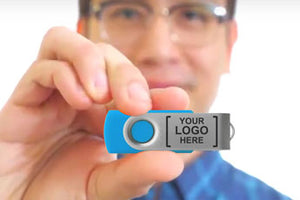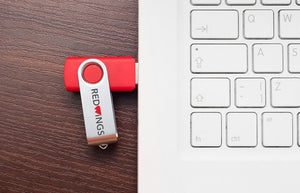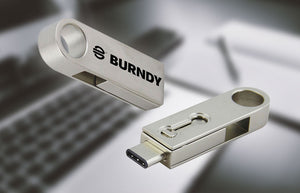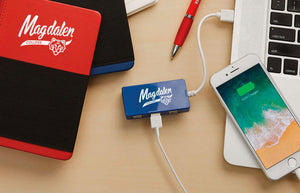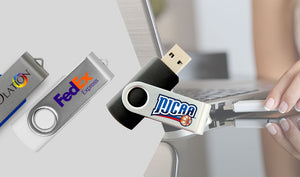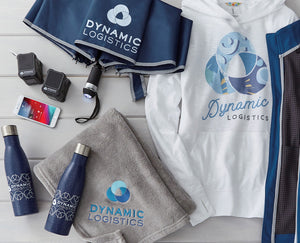USB Protection Tips to Keep Your Data Secure
Let’s review those checks below.
Tips For Employing USB Protection
USB drives come in all shapes and sizes. Some come in the unassuming gray case of the previous decade. Others are designed to look like toys, pens, and other household items.
Additionally, USB drives have varying levels of free space on them.
Regardless of how your USB drive looks or how much space it has, it needs USB protection.
Here are some simple checks you can use to ensure it maintains that protection.
Keep Track Of Your USB Drive
USB drives are sometimes called “thumb drives.” The nickname comes from the drives’ average size. Most are roughly the size of an adult’s thumb.
While their size makes them convenient, it also makes them prone to getting lost.
If your USB drive has a keyring, hook the drive to your car keys. If it doesn’t, designate a spot on your person to place it. That way, you’ll know where it should be when it isn’t in use.
Whatever you do, don’t simply throw the drive in a purse or bag and be done with it. It could easily fall out when you dump the bag or while you’re moving. Ensure it is in its own zippable or collapsable compartment, such as a small bag or box.
If you must carry your drive in your pocket, ensure the pocket is zipped or buttoned shut.
Encrypt Your USB Drive
There’s no doubt about it. When it comes to USB protection, nothing beats encryption.
Encryption locks your data. No one except someone with an administrative-level password can access it. Even the best hackers can’t break through encryption.
There are a few ways to encrypt your USB drive’s data.
First, you can simply buy a USB drive that has encryption built into it.
Second, you can install encryption software on the drive. Your local electronics dealer or a reputable online dealer can answer your questions concerning this software.
Third, you can use an open-source encryption program. A popular choice is VeraCrypt.
VeraCrypt is installed on your drive instead of your PC. That way, the software protects your data no matter where you take it.
Don’t Use Unknown USB Drives
Visit any library or computer lab. You might find an unknown USB drive stuck into a computer or left on a desk.
It may be tempting to take the drive, either to use or to identify the original owner. However, sticking unknown drives into your computer is a major security risk.
You have no idea what’s on the drive. There could be nothing special. On the other hand, there could be malware designed especially to attack your PC.
The safest thing you can do with an unknown USB drive is turn it in. Give it to the front desk of the place where you found it. If you found it at work, turn it over to the IT department for review.
Use Labels
USB drives have a good bit of space on them. However, their space isn’t unlimited. For that reason, most users end up buying more than one drive.
Having more than one drive can be confusing. That goes double if all your drives have the same basic gray case.
For that reason, it is a good idea to organize and label your USB drives.
For example, you can dedicate one to vacation pictures. Another you can dedicate to a novel you’re writing. Another could be your work USB.
Organization and labeling do more than keep you from grabbing the wrong drive. They prevent you from giving potentially sensitive information to the wrong person.
Review Your USB Drive’s Contents
Even the best organization system has its cracks.
Prior to lending your drive to anyone, you should double-check its contents.
Open every folder. Change the view setting so all files appear as large thumbnails. Click on and look at everything you can’t identify.
Work notes and financial information isn’t something you want even your best friend seeing.
Delete All Content Prior to Giving Away A USB Drive
Although USB drives are convenient, there are other ways to back up data. Common methods include using an external hard drive, uploading documents to a cloud system, and e-mailing documents to yourself.
If you decide to get rid of your USB drive, review it thoroughly. Ensure there are no files or folders of any kind left on the drive.
If there are, see what they are. Back up what you want to keep. Wipe out everything you want to get rid of.
Set Up A Group Policy About USB Drives
Many professional settings require employees to use and carry USB drives.
It’s true that employees work at the same company. However, not every employee should have access to certain pieces of information. Some records, such as financial records, are designated for certain pairs of eyes only.
That holds especially true for government departments.
As such, businesses should create a group policy about USB drives.
The policy can be created by managers. However, the employees to whom the policy pertains should have a say. After all, the policy will most affect their day-to-day operations.
The policy should describe how to categorize the data on the drives. It should also list the security measures to be taken with each drive.
All employees who deal with encrypted drives should receive their passwords. They should also be clear on which employee to go to in the event they find a certain department’s drive.
Need More USB Protection Tips? Contact Us!
At Memory Suppliers, we are the authority on USB drives and USB drive usage. We sell a variety of drives and help with loading files onto drives.
For more information on USB drives and how to protect them, please feel free to contact us!
CONTACT US
- choosing a selection results in a full page refresh
 Thanksgiving sale! Use code:
Thanksgiving sale! Use code:  Black Friday Sale! Use code:
Black Friday Sale! Use code:  Cyber Monday! Use code:
Cyber Monday! Use code:  Giving Tuesday! For every order we will donate a toy to TOYS FOR TOTS
Giving Tuesday! For every order we will donate a toy to TOYS FOR TOTS
